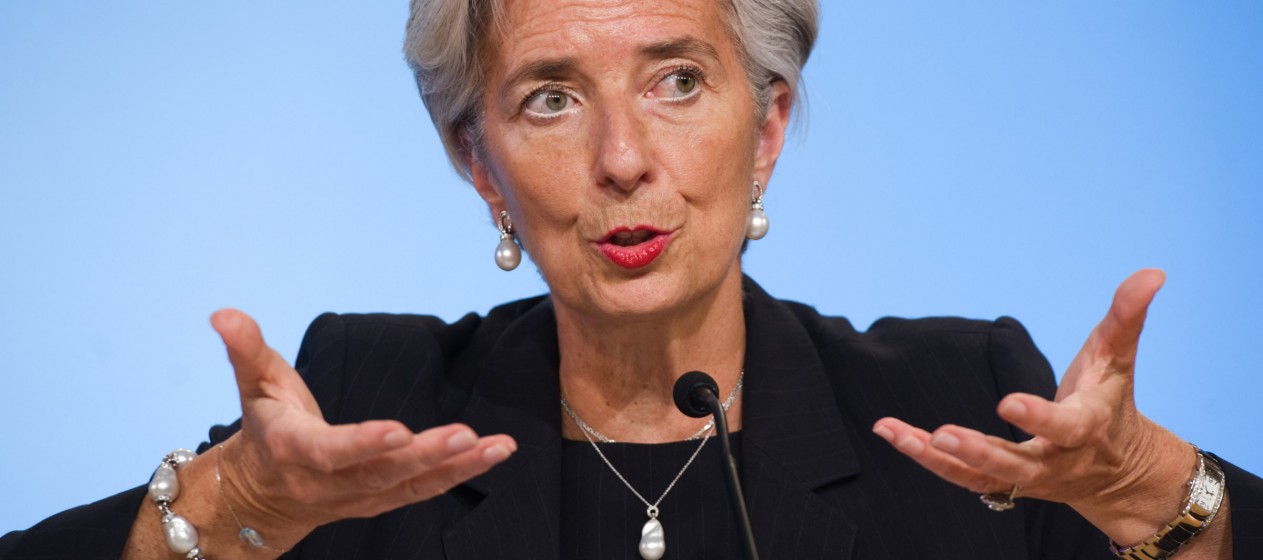In a recent article, Benedict Clements, Sanjeev Gupta, and Masahiro Nozaki find evidence that International Monetary Fund (IMF) programmes increase social spending in the least developed countries (LDCs).[1] The finding is unexpected, since earlier studies demonstrated an unequivocal relationship in the opposite direction (i.e. that IMF programmes reduce social spending). This note discusses why there might be contradictory conclusions in the literature. Particularly, I argue that social spending increases in a specific IMF programme type, namely Poverty Reduction and Growth Facility (PRGF) programmes. Those programmes are precisely designed for LDCs and envisage an increase in targeted spending in health and education. In other types of programmes such as Stand-by Arrangements or Extended Fund Facility on the other hand we do not observe a similar impact. Hence, specification of particular programme type in our analysis can help pinpointing the exact impact of the IMF programmes on social spending and explain the contradictory results.
Secondly, in this note, I argue that we need more qualitative studies of IMF programmes in order to shed light on the human and social cost of the programmes. Broad correlations between social spending and IMF programmes may not reflect the full breadth of their effect in programme countries. Especially, non-PRGF programmes often do not include clauses directly related to social spending. Yet, they impose upper limits on expenditure, which implies significant welfare retrenchment measures and cuts in social services by governments. Particular domestic groups, especially those who lack representation, might suffer more from those cuts more than others.
In the literature there is a near consensus that IMF programmes are likely to reduce welfare benefits, stir opposition, and cause discontent in programme countries. In fact, scholars have recently moved beyond this simple correlation and started disaggregating the programmes and their impact on separate domestic groups. For instance, Irfan Nooruddin and Joel Simmons argue that cohesive groups such as the military is more likely sustain their income and their share in the governmental budget, while weaker groups are more likely to lose in terms of benefits under the programmes.
Teri Caraway, Stephanie Rickard, and Mark Anner demonstrate that the organisational strength of labour groups is associated with the number of labour conditions that IMF programmes impose on a country.[2] Whenever labour groups are stronger, they are more likely to avoid intrusive conditions. Similarly, James Vreeland provides evidence that the programmes systematically cut wages while cooperate benefits rise while under an IMF programme.[3] This might be because cooperate groups have more representative power compared to the labour groups.
In recent work, Caroline Hartzell, Matthew Hoddie and Molly Bauer find that the programmes increase the likelihood of civil wars by creating “loser” and “winner” groups.[4] Loser groups are more likely to react against the programmes and start a civil war. On the whole, the literature thus seems to be progressing towards decomposing the programmes and analysing which groups are likely to be adversely affected.
As we are moving towards refining and fine-tuning our arguments in terms of domestic power balance among the groups and which ones are more adversely affected, the finding that IMF programmes increase the overall social spending in the least developed countries comes as a surprise. IMF staff, Benedict Clements, Sanjeev Gupta, and Masahiro Nozaki, use a comprehensive data set in their analysis and analyse the impact of the programmes on social spending.[5] They look at public education and health spending as a percentage of GDP income for 140 countries between the years 1985 and 2009. 70 countries in the sample are LDCs.
They find a 3.4 percentage increase in education and one per cent increase in health spending for the LDCs, while evidence is mixed and statistically insignificant for other countries. The findings still challenge the earlier conclusions that IMF programmes reduce social spending. Alexander Kentikelenis, Thomas Stubbs, and Lawrence King from the University of Cambridge replicate the results and do not discern any statistically significant relationship between health and education expenditure and IMF programmes for LDCs.[6] They also argue that IMF programmes increase social spending only in Sub-Saharan countries, which spend considerably below the world average for social services. The relationship does not hold for LDCs in other regions.[7]
I would like to bring an additional angle to the geographical nuance. Firstly, IMF programmes are likely to increase social spending in a specific programme type called PRGF, designed for reducing poverty and providing concessional loans. Those programmes include conditions such as mandatory vaccination measures, increase in the number of hospitals and nurses, support for girls’ education, and recruitment of additional teachers. This is due to two reasons. Firstly, these countries, which are eligible for concessional loans and PRGF, are often undergoing a humanitarian crisis. They are in urgent need for health services. Secondly, they often do not have the state capacity to execute the programmes. They do not have consultants, lawyers, advisors, and planners who can contemplate, formulate interests, and implement the programmes. IMF staff often put more explicit conditions such as the recruitment of a defined number of teachers and hence replaces the state bureaucracy to a certain extent. That is why social spending clauses in those programmes are explicitly imposed and are tied to disbursement of loans.
Based on this evidence, we can divide the programmes into different types and control for the PRGF programmes in our analysis. This way we can derive more nuanced results on the impact of IMF programmes on social spending. This also applies to the study of the impact on unrest, civil wars, and governmental instability. Those programmes are less likely to cause violent reactions in programme countries. Moreover, applying a distinction based on programme type, rather than a geographical focus, is more defendable, since it does not use a proxy to measure the varied impact. Programme type is a more direct and objective measure of the independent impact of IMF programmes compared to the proxy variable based on geographical location.
Secondly, qualitative studies of the impact of IMF programmes on social spending can yield more refined theories and nuanced empirical evidence. As argued above, in non-PRGF programmes, the IMF often assigns conditions that establish broad governmental spending ceilings. The cuts are then planned and executed by the bureaucracy under the direction of the cabinet and ministers within the country. It is probably during that specific planning period where different interests are represented and strong groups receive more favourable conditions under IMF programmes.
However, it is very difficult to outline this impact in a large-N study where we establish a negative relationship between IMF programmes and social spending. In order to understand which groups lose under the programmes and which are likely to be exempted from intrusive conditions and why, we might need to delve into domestic data more deeply and lay out the changes to material conditions of different groups and cuts in social benefits. Then, we can discern whether the cohesive groups such as the military sustain their privileges while the weaker, and less represented groups, are more likely to suffer from the cuts. In order to do this, we must look at the legislation relevant to social spending under programmes and then analyse the effects based on group power and representation. This type of study would contribute to the progression of the literature towards more fine-tuned understanding of the group effects of IMF programmes and of budgetary cuts in line with established expenditure ceilings identified in programmes.
The argument that IMF programmes increase social spending might be surprising for the scholars working on the Fund programmes. However, it can contribute to the evolution of the scholarly work in two ways. Firstly, it shows us that we should start distinguishing between different types of programmes such as Stand-by Arrangements, Extended Fund Facility and PRGF. Until now, almost all studies in the literature combine all types of programmes under a binary variable, i.e. the incidence of an IMF programme. Further specification in this direction would contribute to the literature. Secondly, the finding calls for more qualitative studies, where we can document and demonstrate how different groups are affected by cuts and measures under IMF programmes. Our next step then would be to refine our theories about group strength and outline how social spending cuts are entangled with group representation and resources.
References
[1] Clements, Gupta, and Nozaki, ‘What Happens to Social Spending in IMF-Supported Programmes?’
[2] Caraway, Rickard, and Anner, ‘International Negotiations and Domestic Politics’.
[3] Vreeland, The IMF and Economic Development.
[4] Hartzell, Hoddie, and Bauer, ‘Economic Liberalization via IMF Structural Adjustment’.
[5] Clements, Gupta, and Nozaki, ‘What Happens to Social Spending in IMF-Supported Programmes?’
[6] Kentikelenis, Stubbs, and King, ‘Structural Adjustment and Public Spending on Health’.
[7] Ibid.



